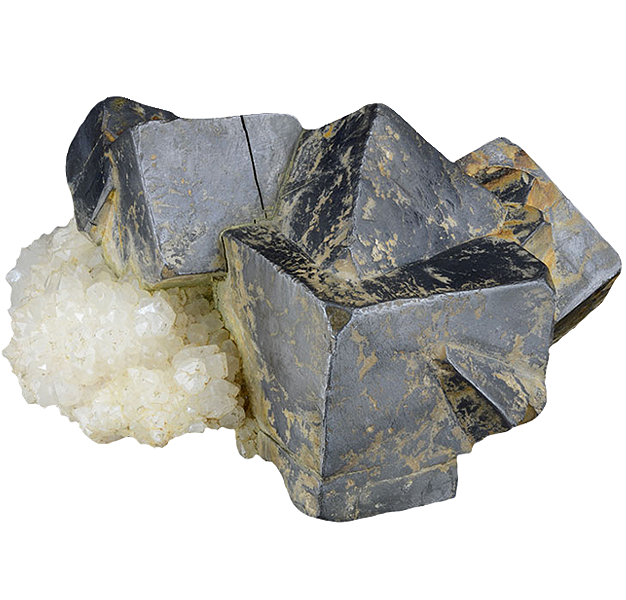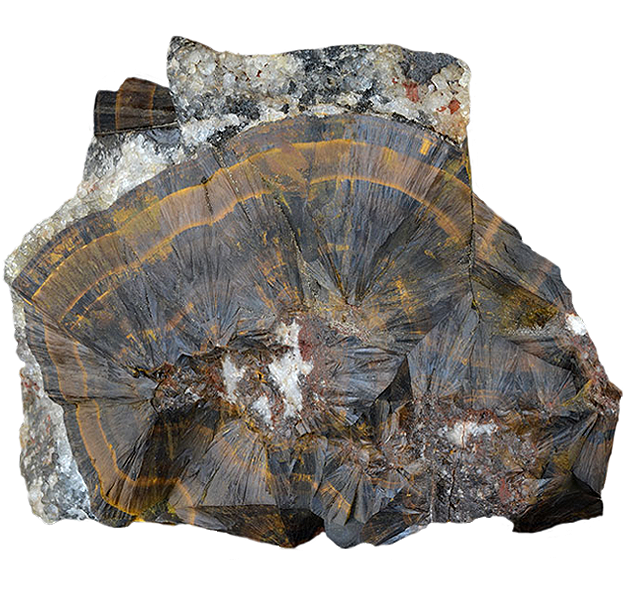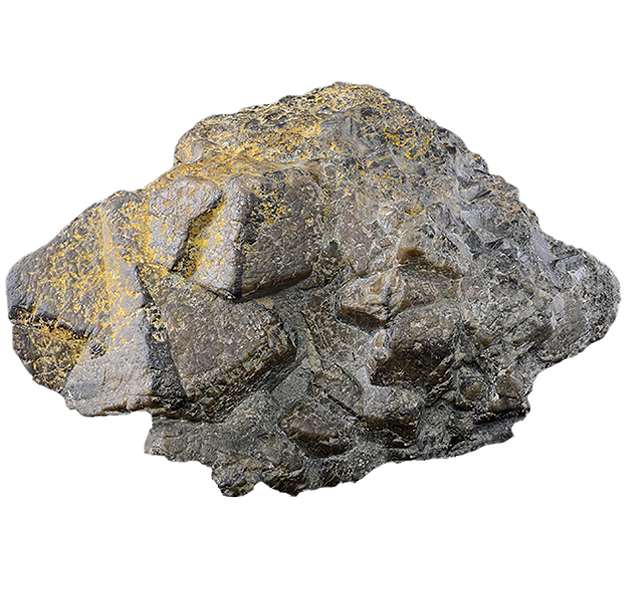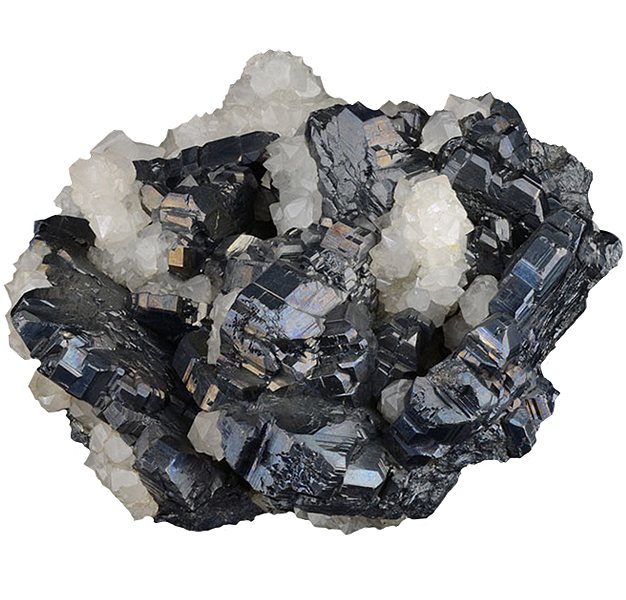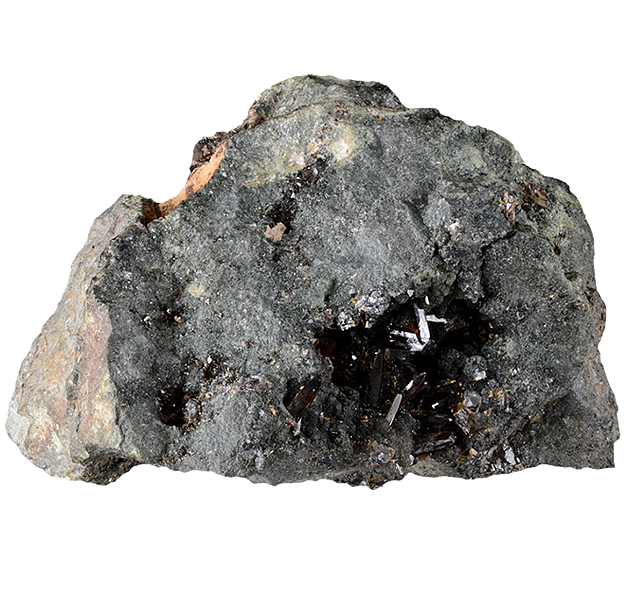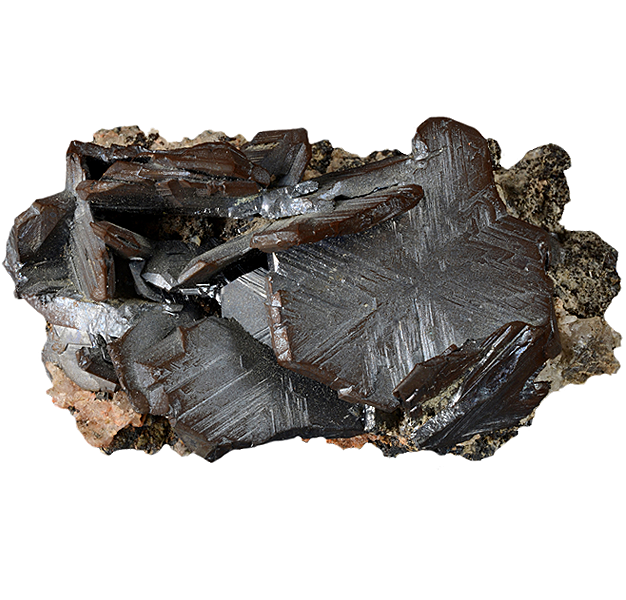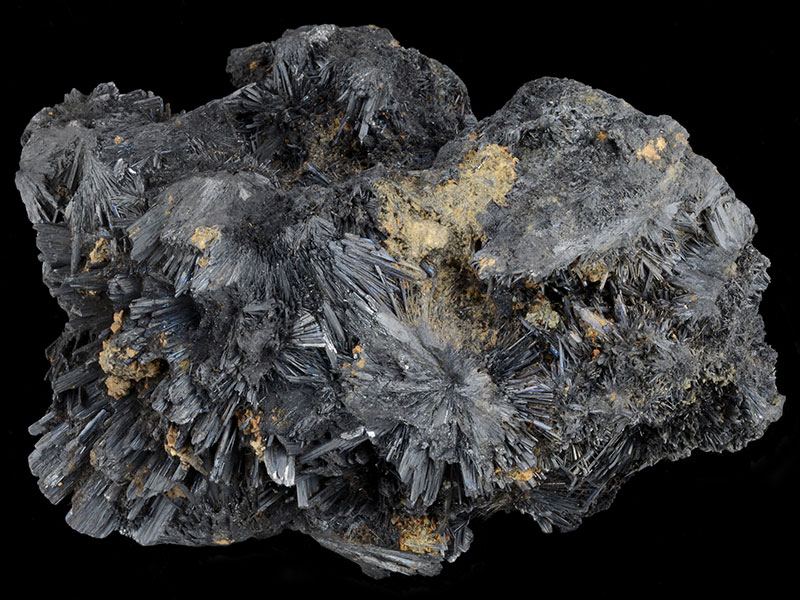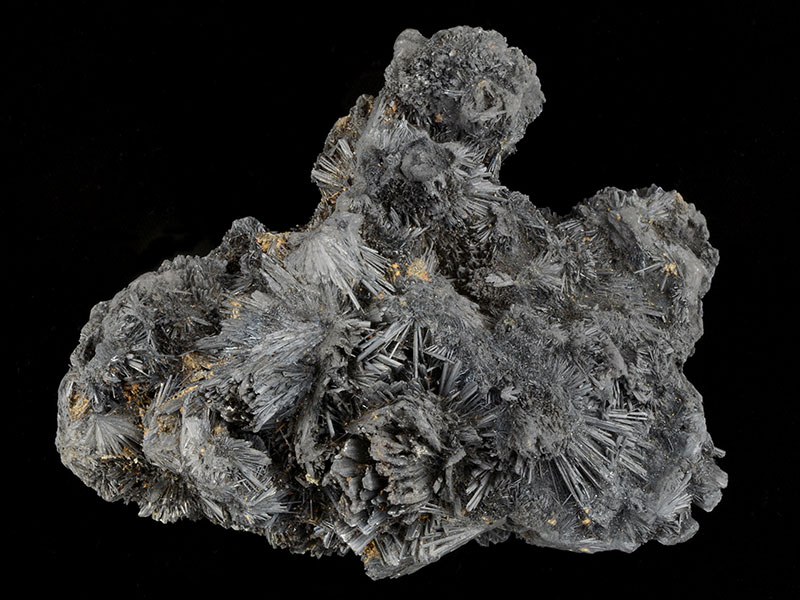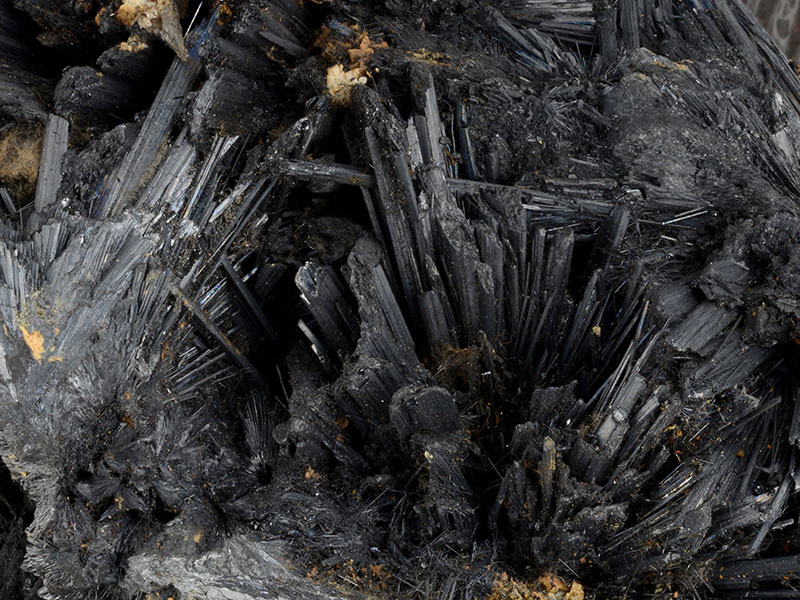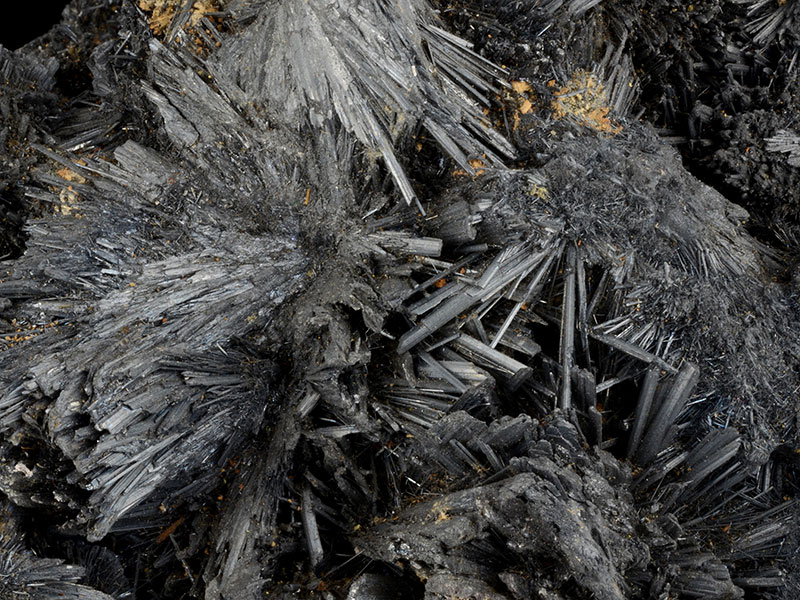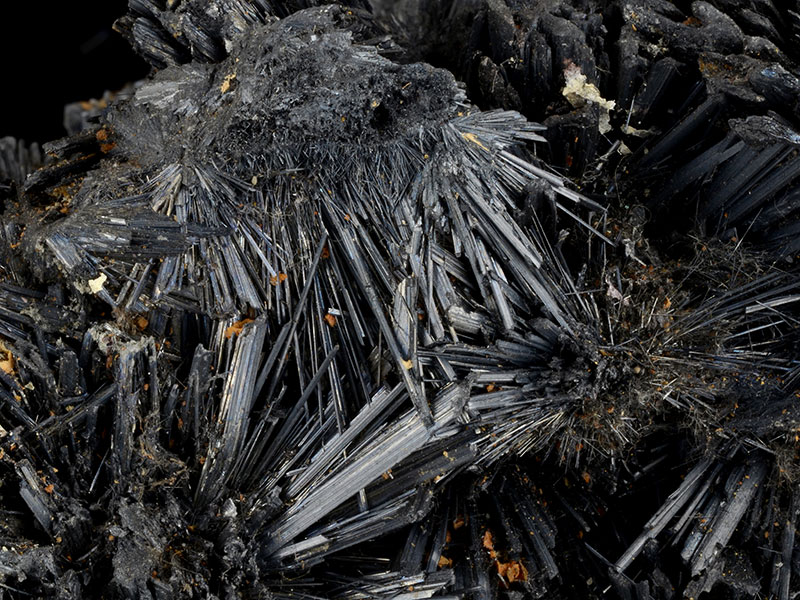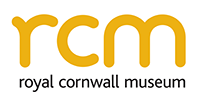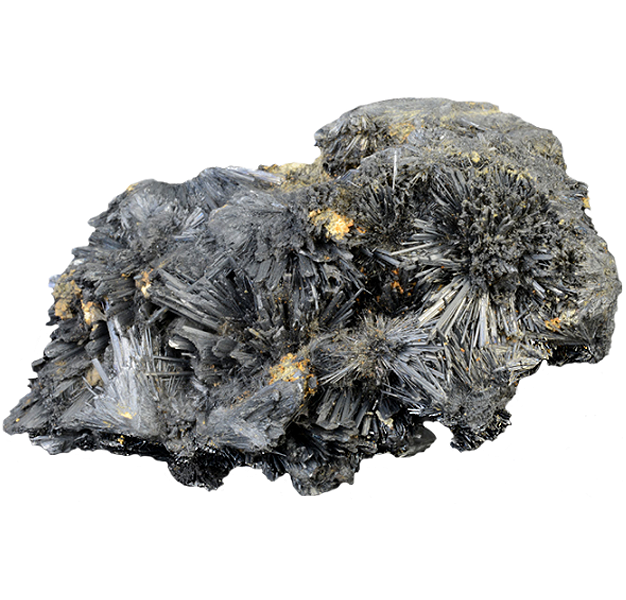
Fact sheet
Stibnite (antimony sulphide) is the main ore mineral of the metal antimony.
Small amounts of antimony minerals were found in many Cornish mines but only a few were worked for antimony. Fewer still tried to produce it as their single main product. Most of these mines were in the north of the county. This specimen was acquired by the Royal Institution of Cornwall before 1881. It is from Wheal Boys (also called Trewetha Mine), an old antimony mine in the parish of St Endellion, which was worked in the late 18th century.
Antimony is most useful when alloyed with other metals, increasing their strength and durability. It was added to some types of pewter (an alloy of tin) from the late 17th century onwards.
Chemical Formula: Sb2S3
Specimen no. TRURI: 801.1578
Location: Wheal Boys
Grid Reference: SX 004 800
Mindat http://www.mindat.org/min-3782.html
This Collection focuses on Cornwall and West Devon’s mineralogical and mining heritage. The specimens it features are drawn from the collection of the Royal Institution of Cornwall (RIC) held at the Royal Cornwall Museum (RCM).
This collaborative project involving the RCM, the Cornish Mining World Heritage Site and The Open University explores how access to the RIC’s mineral collection and the stories it can tell can be widened using digital technology. It includes radioactive minerals from Cornwall that would otherwise be inaccessible to the public for health and safety reasons.
Sample details
More from this collection
